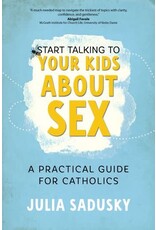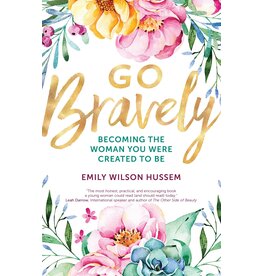Start Talking to Your Kids about Sex
| Article number: | 210000017027 |
| Availability: | In stock (3) |
| Delivery time: | 1-2 Business Days To Process Order |
| Available in store: | Check availability |
One of the most difficult challenges we may face as parents is to have that first “talk” with our kids. You know the one—discussing their changing bodies and sex for the first time.
When do we begin? Where do we start? How do we do it in a way that makes sure they have the information they need, doesn’t make them (or us) feel overwhelming shame, and forms them in Catholic teaching? In Start Talking to Your Kids about Sex, clinical psychologist Julia Sadusky will answer questions you may have and give you the boost of confidence you need as you have foundational conversations with your elementary-age children long before they hit puberty.
As Christians, we believe that the body is a blessing and a gift from God—and worth protecting—from the beginning of life. But many parents and educators wait until puberty to begin conversations with kids about sexuality and relationship boundaries. We miss opportunities along the way to reinforce their body’s goodness—like when young children discover their most intimate body parts, for example. We might react out of fear and embarrassment because we don’t know how to respond calmly.
Sadusky says we have to be proactive about providing our children a healthy understanding of the goodness of their bodies and offering them ways to respond if someone doesn’t respect their boundaries. If we don’t, our discussions about sexuality end up being too little, too late. By the time puberty hits, children will have learned from culture, social media, and sometimes, early experiences of trauma. Our failure to engage well in these conversations earlier has significant consequences.
Start Talking to Your Kids about Sex is one of only a few resources focused on these issues. It is organized in a question-and-answer format, making it easy for you to begin with the topic that’s most pertinent at the time. It will help you identify barriers to these conversations with a child. You’ll be able to draw from concrete scripts addressing everything from responding to questions about genitalia, exploratory play, sexual abuse, and technology use. With each chapter, the content will help you grow your courage and practical knowledge.
This go-to resource is structured around the most frequently asked questions Sadusky receives in her clinical practice, including
- What is healthy body exploration?
- Should I make my kids hug strangers?
- How can I help my kids learn to say no when I’m not around?
- What are good “house rules,” and how do I justify them to other adults?
- What do I do if my kids say they had an unwanted sexual experience?
- How should I respond to invitations to sleepovers and overnight trips?
An appendix offers additional resources for parents.
While the book is geared toward parents, extended family members, caregivers, mentors, mental health professionals, and educators also will find the information helpful.









